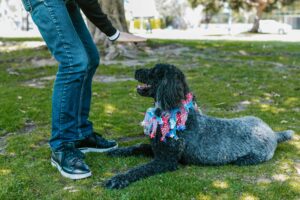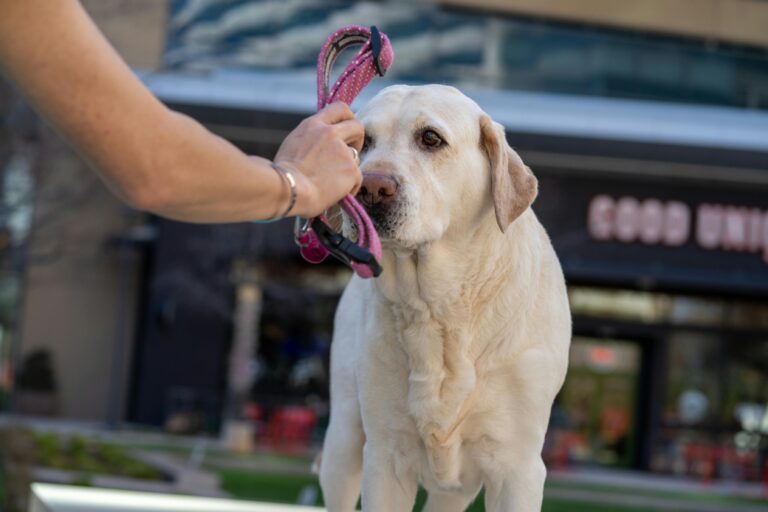Freedom Comes From Trust, Not Luck
There’s nothing like watching your dog run freely through a field or trail during the summer — but off-leash freedom doesn’t come from hope or good vibes. It comes from consistent training and proofed obedience.
If your dog doesn’t have a solid recall, strong impulse control, and calm responsiveness around distractions, off-leash time is risky — for them and for others. But the good news? It’s 100% trainable.

Step 1: Master Recall on a Long Line
A long leash (15–30 feet) lets you simulate off-leash conditions while maintaining control. Use this tool in a fenced yard or open space to practice recall.
Here’s how to build it:
- Call your dog once (“Come!” or their name)
- Use leash guidance if needed
- Reward the instant they reach you
- Keep it fun, exciting, and consistent
- Never punish or scold them when they return — even if they took a while
This lays the foundation for a reliable response at any distance.
Step 2: Add Distractions Slowly
Once your dog recalls consistently in calm areas, introduce mild distractions:
- Toss a ball while calling them
- Practice near other leashed dogs
- Use food or sound distractions at a distance
If your dog struggles to respond, dial back the difficulty and build up again.
Step 3: Use “Break” and Structured Freedom
Off-leash time doesn’t mean your dog gets to ignore you. Alternate between:
- Focused heel walking
- Recalls
- Short “free time” with a release word like “break”
- Structured stops (sit, down, or place)
This keeps your dog mentally engaged — not just running wild.
Step 4: Proof Commands in Real Settings
Before removing the leash, your dog should show:
- Immediate recall with distractions
- Strong “down” or “place” on command
- No bolting when seeing people, dogs, or wildlife
- Respect for boundaries, even when excited
Practice in fenced dog fields, quiet parks, or large backyards. Only move to fully off-leash when success is predictable.
Step 5: Stay Engaged With Your Dog Off-Leash
Your dog should see you as the most important thing in their environment — not the bushes, squirrels, or other people.
Keep their attention with:
- Short bursts of tug or fetch
- Spontaneous recalls
- Verbal praise and check-ins
- Changing directions and rewarding follow-through
This tells your dog that good things happen when they stay connected.
Tools That Help
- E-collar training (only when taught properly and layered after foundation work)
- High-value food rewards
- Whistle recall for consistent tone
- Leash for backup during practice sessions
- Distraction drills like toy tosses or unexpected sounds
Final Thoughts: Off-Leash Freedom Is Earned
You wouldn’t give car keys to someone who hasn’t practiced driving. The same goes for your dog and off-leash freedom.
Invest time now in structured recall training, distraction work, and consistent leadership. The payoff? Safe, joyful, off-leash adventures all summer long — and trust that lasts a lifetime.

